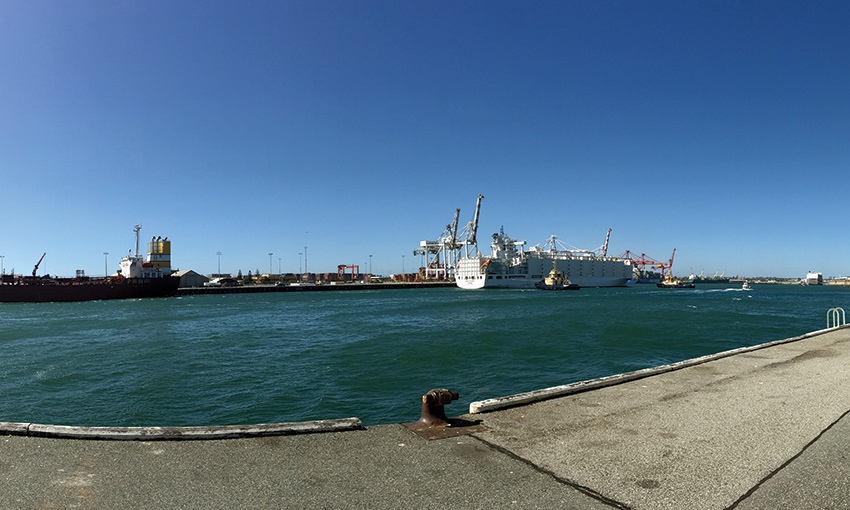Could you give us a snapshot of trade through Fremantle Ports over the past 12 months?
The headline numbers for the past financial year, we had a before-tax profit of $67 million, which was very much in line with the prior year, which was good. And we had a solid rate of return across the business of 8.7%. As you as you look from a revenue and trade standpoint, it was pretty solid across the board. It was a yearly record in terms of container volume coming through Fremantle – 809,709 TEU came through the port. That was up versus the previous year of 792,021 TEU.
What was the driver of that increase?
There are still very strong economic conditions here in WA that supporting continued imports. And exports were also strong for the year as well. And, we’ve seen strong trade already in this financial year. As an example, if you take August this year, that was the strongest month for containers we’ve had in about four years.
We’ve also seen a strong year for motor vehicle imports. We typically get about 100,000 vehicles a year coming through, and last year was 113,000. And these were not just new vehicles coming in, we also had a not insignificant amount of second-hand vehicles coming into Fremantle from the East Coast.
We obviously would love to see trade through the port continue to grow. But ultimately, it’s going to be driven by consumer and industrial demand.
How has trade through the Outer Harbour been over the year?
People think of Fremantle Ports and they tend to think about containers and container cranes in Fremantle Inner Harbor, but we’ve got the Outer Harbour as well. And from a on a mass-volume standpoint, Outer Harbor handled 22 million tonnes last year. And that was up about 15% on the prior year. This was driven in large part by clinker imports – which were up about 6% on the prior year. Also, petroleum imports were up 16% and fertiliser was up 19%.
Then, exports were up 20% – wheat was one of the more significant contributors with wheat exports up 60 to 65% for the year and barley was up 59%.
Have there been any new infrastructure developments over the past year?
One project we have on at the moment is a new clinker circuit at our Kwinana Bulk Terminal, which we started last year. And we’re due to commission it around September next year.
The clinker circuit is an investment of $80-million plus. The project is to replace a lot of aged landside assets new infrastructure, in terms of conveying systems, storage facilities, etc. This includes a direct conveyor to one of our customers. This will take a lot of a lot of trucks off the road as well.
The role that we play here is to make sure that we’ve got the right assets – not just the right capacity – but also the right assets in place. And this $80-million project is the largest capital project that the port authority has done in over a decade. Just put it in context. Last year, we reinvested back into the business about $100 million last year, back into Fremantle Ports. If you look at that this year, in both capital and maintenance, it’ll be between $100 and $150 million.

In 2022 Fremantle Ports launched its five-year strategic plan – how is that going almost two years in?
And one of the one of the goals in that five-year plan was to ensure that we had capacity to facilitate any import or export trade that would make sense to go through the metropolitan port system. That for us is important. When you look at our purpose here, it’s around facilitating trade for a more prosperous Western Australia. And the best way that we can do that is making sure we’ve got capacity available to satisfy current demand and future demand.
This ensures that the broader port ecosystem provides the reliability and efficiency that our customers need. We’re looking at the decisions we make through the lenses of the importers and exporters of Western Australia – they are the true users of the port assets that we have and. So for us, it’s all about making sure that not only have we got the right capacity in place today, but we’ve got the right capacity in place for the future.
Speaking of the future, could you give us an update on where the Westport project is?
Westport is in what they call stage three now, which is due to finish in the middle of next year. The project is looking at moving the container trades, which are now handled in the Inner Harbour, down to the Outer Harbour in Kwinana.
The key piece of work in stage three of the project is to deliver to government a business case for the relocation of the container trade. There’s a fairly large team set up under the banner of Westport to carry this out. We’ve got a strong involvement as Fremantle Ports in that, both in terms of supporting that initiative, and that and that study and piece of work and also providing various bits of advice to them as well.
What do the next 12 months have in store for Fremantle Ports?
Trade continues to remain strong and we hope that continues. Business is performing well. We are committed to making sure that we have fit for purpose capacity in place to support the state’s importers and exporters, and in order to do that, we need to step up the level of investment that we’re putting in the business.
It’s a really exciting time, particularly here in WA, across each of the ports, I think you’ll see a significant amount of investment take place across the ports over the next five, 10, 15, 20 years. And from a Fremantle Ports standpoint, we’re really excited to be a part of it.
This article appeared in the December 2023/January 2024 edition of DCN Magazine

